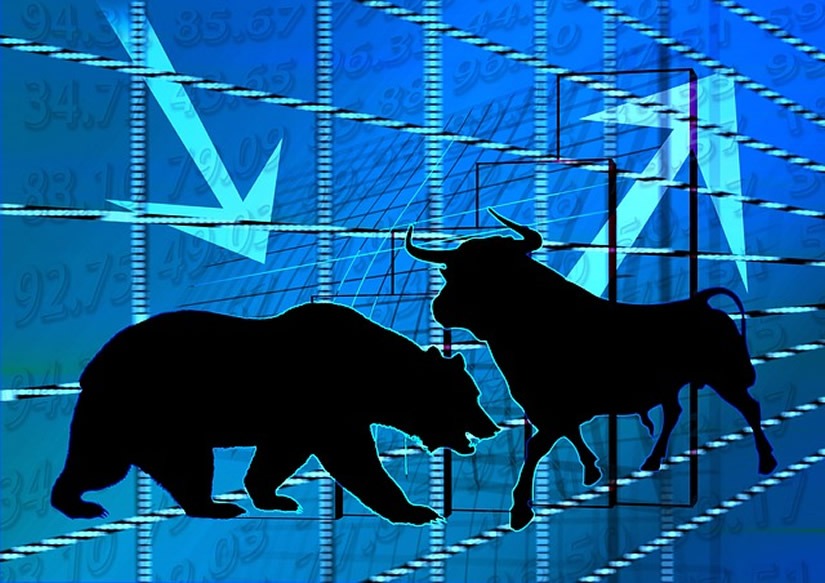By Orbex
August is generally a low-volatility month in the markets. This is because many market makers are on vacation, and there are fewer market-moving events scheduled.
Typically, once the second-quarter earnings season is over (by the middle of the month), stock trading volatility reaches a minimum. The only other time of the year when there is less trading volume is the end of the year holiday period.
The flip side is that unexpected events can have a bigger impact as we saw on Monday.
Less liquidity typically means that the market moves further before rebalancing. While stocks have the most noticeable changes, forex and commodities can be affected also over the next couple of weeks.
That said, the US Labor Day is the unofficial start of the new “trading season” where liquidity and volume pick up.
Free Reports:
 Get our Weekly Commitment of Traders Reports - See where the biggest traders (Hedge Funds and Commercial Hedgers) are positioned in the futures markets on a weekly basis.
Get our Weekly Commitment of Traders Reports - See where the biggest traders (Hedge Funds and Commercial Hedgers) are positioned in the futures markets on a weekly basis.
 Sign Up for Our Stock Market Newsletter – Get updated on News, Charts & Rankings of Public Companies when you join our Stocks Newsletter
Sign Up for Our Stock Market Newsletter – Get updated on News, Charts & Rankings of Public Companies when you join our Stocks Newsletter
But things are different now
At least, that’s how things would be pre-covid.
Now, the vacation season means there are more people at home with time to check their stock portfolios. Or they coordinate on social media to find a good investment.
One of the characteristics of the now-famous Wall Street Bets saga is that it was in part successful because they were taking advantage of a period of traditionally low volumes in the market. In fact, while covid significantly impacted other service industries, the financial services sector saw a massive increase in demand thanks to the pandemic.
Retail trading services in particular saw a significant increase in traders, as well as an influx of capital. This didn’t just happen in the US but across the world too.
How much are we talking about?
IG Group, for example, saw their active client numbers jump by 46% in the European area during the first half of this year. Moreover, Hargreaves Lansdown, which caters to larger traders in the UK, saw an influx of £8.7B and 233K new clients since the start of the pandemic.
Across the pond, however, the Chicago Mercantile Exchange saw trading volume increase by “just” 15% during the first quarter.
Part of the discrepancy could be because US trading firms were competing with the rise in popularity of trading apps, such as Robin Hood.
Unlike the scandal-associated Robin Hood though, SoFi saw their customer base jump by 113%, adding over a million users during the pandemic.
What this means for the markets
Economists estimate that retail trading has more than doubled since the pandemic began. Not only is there more money, but it’s also more concentrated.
On the other hand, emerging markets’ trading volume is actually down year-over-year. This is because outside of Europe and the US, retail traders’ favorite higher leverage trading instruments are not as readily available.
Additionally, economists expect up to 32% of the equity volume in the US to be retail traders. This figure is a stark increase from the 17.1% recorded in January of 2020.
The Wall Street Bets saga shows that retail traders definitely have the muscle to move the markets when coordinated. The latest estimate of retail trader assets at $15.5 trillion, is certainly a force to be reckoned with.
By Orbex

- The Dollar Index strengthened on Powell’s comments. The Bank of Mexico cut the rate to 10.25% Nov 15, 2024
- EURUSD Faces Decline as Fed Signals Firm Stance Nov 15, 2024
- Gold Falls for the Fifth Consecutive Trading Session Nov 14, 2024
- Profit-taking is observed on stock indices. The data on wages in Australia haven’t met expectations Nov 13, 2024
- USD/JPY at a Three-Month Peak: No One Opposes the US Dollar Nov 13, 2024
- Can Chinese Tech earnings offer relief for Chinese stock indexes? Nov 13, 2024
- Bitcoin hits an all-time high above $88,000. Oil remains under pressure Nov 12, 2024
- Brent Crude Stumbles as Market Sentiments Turn Cautious Nov 12, 2024
- Bitcoin hits new record high just shy of $82,000! Nov 11, 2024
- The Dow Jones broke the 44 000 mark, and the S&P 500 topped 6 000 for the first time. The deflationary scenario continues in China Nov 11, 2024
